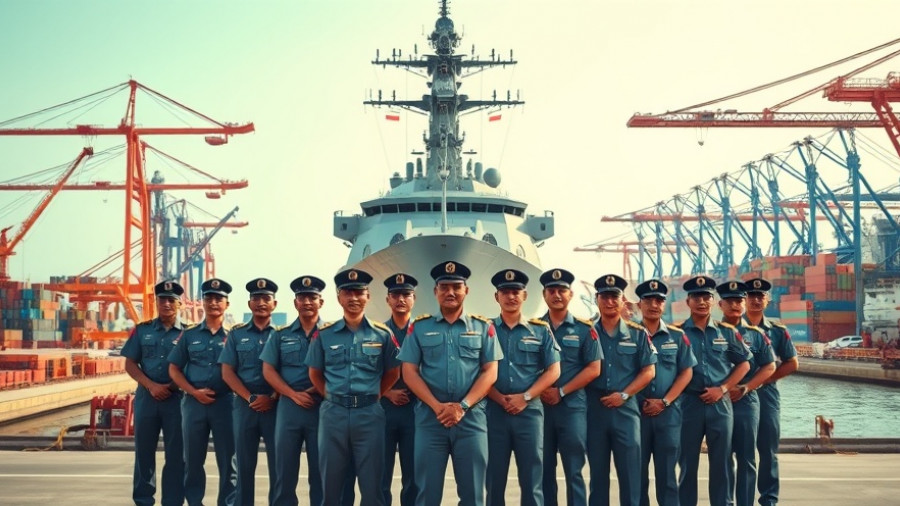
Indonesia Takes a Bold Step Towards Modern Naval Warfare
On October 24, 2025, the Indonesian Navy (TNI AL) celebrated a significant milestone with the commissioning of its first hybrid-propulsion warship, the KRI Belati (622), at the Sealift Command headquarters in North Jakarta. This innovative vessel represents more than just a technological advancement; it symbolizes Indonesia’s growing capability in maritime defense and its commitment to sustainable practices in military operations.
Exploring Hybrid Propulsion Technology
The KRI Belati is a 60-meter Fast Attack Craft-Missile (FACM) that utilizes a hybrid propulsion system, seamlessly combining traditional fuel-powered engines with biofuel capabilities. This dual fuel option not only enhances the vessel's operational versatility but also promotes environmental sustainability—an increasingly critical factor in modern warfare.
Admiral Muhammad Ali, Chief of Staff of the TNI AL, highlighted the ship's fuel efficiency, stating that future FACMs will likely follow this design. This shift towards hybrid technology marks a progressive trend in naval power, paving the way for other environmental initiatives within the military sector.
Historical Context and Background of Indonesia's Naval Development
The launch of KRI Belati is a testament to the evolution of Indonesia’s naval capabilities. Historically, the country has relied heavily on foreign military assets; however, in recent years, there has been a concerted effort to enhance domestic production and self-sufficiency. The development of the KRI Belati involved collaboration between local shipbuilders, like PT Tesco Indomaritim, and international defense firms, showcasing a strategic alignment towards building a robust defense sector.
Impact on Regional Maritime Security
With its induction into the Eastern Fleet Command, KRI Belati aims to bolster Indonesia's defense capabilities in the less fortified waters of the eastern maritime region. Admiral Ali expressed optimism that this addition would not only enhance fleet strength but would also serve as a deterrent against potential threats in the region. The Eastern Fleet historically has fewer assets when compared to the Western and Central commands, making this new vessel crucial for maintaining strategic stability.
Future Predictions: Expanding the Fleet with Advanced Technology
The KRI Belati's successful launch opens avenues for further advancements in Indonesia’s naval architecture. As Admiral Ali stated, the integration of hybrid propulsion systems in future vessels is likely. As the global emphasis on environmentally friendly practices intensifies, the Indonesian Navy’s proactive stance in this area could position the nation as a leading model for sustainable military innovation.
What This Means for Indonesia's Shipbuilding Industry
Significantly, the commissioning of KRI Belati represents a pivotal moment for Indonesia’s shipbuilding industry. CEO Jamin Basuki of Tesco Indomaritim noted that years of research and collaboration with Turkish defense firms had culminated in this groundbreaking design. By enhancing its domestic production capabilities, Indonesia is not just improving its military assets but is also boosting its economy through job creation and increased investment in defense technology.
Emotional and Human Interest Angle
This launch is not merely about technology; it embodies the national pride of Indonesia. As the first hybrid-propelled warship, KRI Belati signifies a potential shift in the perception of Indonesia’s defense capabilities on a global scale. For many Indonesians, this achievement is a reflection of the nation’s resilience and its commitment to secure its waters and resources for future generations.
Call to Action: Embrace the Future of Naval Warfare
As Indonesia steps boldly into the future of naval technology with KRI Belati, it is essential for citizens and stakeholders alike to support further innovations in the defense sector. Engage in discussions surrounding military advancements, policy making, and local shipbuilding initiatives to foster a resilient and self-sufficient national defense framework.
 Add Row
Add Row  Add
Add 




Write A Comment